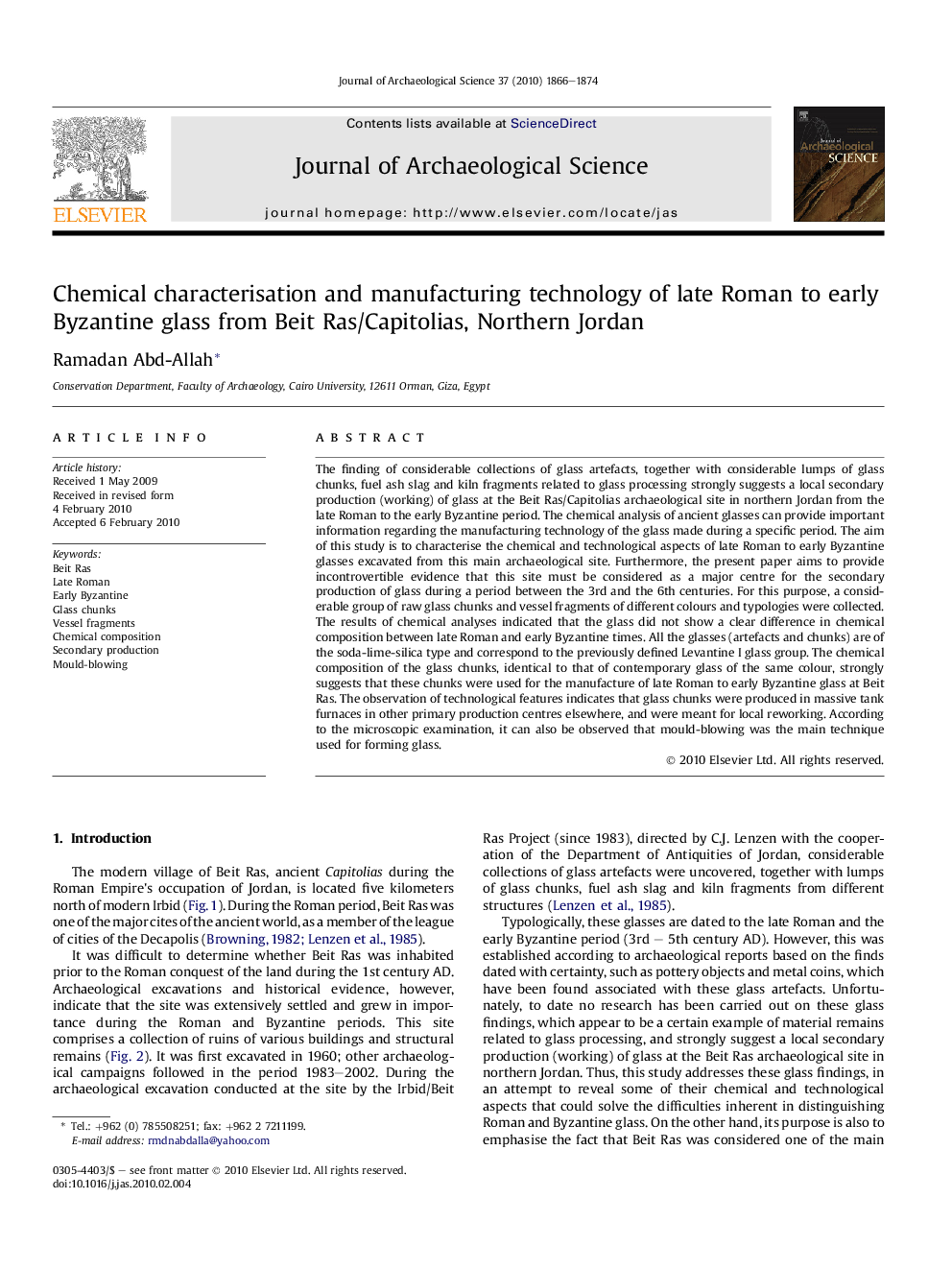| کد مقاله | کد نشریه | سال انتشار | مقاله انگلیسی | نسخه تمام متن |
|---|---|---|---|---|
| 1036709 | 943895 | 2010 | 9 صفحه PDF | دانلود رایگان |

The finding of considerable collections of glass artefacts, together with considerable lumps of glass chunks, fuel ash slag and kiln fragments related to glass processing strongly suggests a local secondary production (working) of glass at the Beit Ras/Capitolias archaeological site in northern Jordan from the late Roman to the early Byzantine period. The chemical analysis of ancient glasses can provide important information regarding the manufacturing technology of the glass made during a specific period. The aim of this study is to characterise the chemical and technological aspects of late Roman to early Byzantine glasses excavated from this main archaeological site. Furthermore, the present paper aims to provide incontrovertible evidence that this site must be considered as a major centre for the secondary production of glass during a period between the 3rd and the 6th centuries. For this purpose, a considerable group of raw glass chunks and vessel fragments of different colours and typologies were collected. The results of chemical analyses indicated that the glass did not show a clear difference in chemical composition between late Roman and early Byzantine times. All the glasses (artefacts and chunks) are of the soda-lime-silica type and correspond to the previously defined Levantine I glass group. The chemical composition of the glass chunks, identical to that of contemporary glass of the same colour, strongly suggests that these chunks were used for the manufacture of late Roman to early Byzantine glass at Beit Ras. The observation of technological features indicates that glass chunks were produced in massive tank furnaces in other primary production centres elsewhere, and were meant for local reworking. According to the microscopic examination, it can also be observed that mould-blowing was the main technique used for forming glass.
Journal: Journal of Archaeological Science - Volume 37, Issue 8, August 2010, Pages 1866–1874